Murder and Mystery in Paris: The Body in the Trunk
- SUBSCRIBE
- ALREADY SUBSCRIBED?
BECOME A BONJOUR PARIS MEMBER
Gain full access to our collection of over 5,000 articles and bring the City of Light into your life. Just 60 USD per year.
Find out why you should become a member here.
Sign in
Fill in your credentials below.
The trial of Gabrielle Bompard in December 1890 caused a sensation in Paris.
Despite being accused of the most heinous and brutal of crimes, the waif like, 4’8″ Bombard captured the imagination of the crowds who threw flowers and kisses and cheered her every appearance.
She deserved none of it.
She committed cold-blooded murder with her partner Michel Eyraud. The deed was meticulously planned. The victim was Toussaint-Augustin Gouffé, a Parisian civil servant. Gouffé could have been any man; the couple only had two criteria. The victim had to be rich and receptive to Bompard’s charms. Unfortunately for him, Gouffé met both requirements; he was more than susceptible to women (indeed it was claimed that he had slept with 20 women in the month before his death), and he was known to carry large sums of money about with him.
The plan was seemingly simple; Gabrielle was to lure Gouffé to their apartment in the eight arrondissement where she and Eyraud would kill him.
However murder is rarely simple and for these two chancers, their plan went wrong almost from the start.
Bompard’s troubled background made her the perfect partner for Eyraud who was already an accomplished crook and a thoroughly bad lot. Bompard was 20 years old when she left Northern France to make a life in Paris. Unwanted by her widowed father and his mistress, she was shuffled from schools to convents where she constantly misbehaved and was expelled from in swift succession. In a final act of rejection, her father had her locked up in a corrective institution until she was released and left for Paris.
But Paris can be a cruel and lonely place without money, and Bompard soon ran out of what little she had, and, becoming the mistress to the already married Beyraud, was doubtless an easier option than walking the streets.
Beyraud was more than 30 years Bompard’s senior; his looks long gone, Bompard was an asset to his vanity and a youthful accomplice to his nefarious schemes. Beyraud’s past was to say the least checkered and without merit of any kind. An army deserter, he had fled to the Americas until an amnesty allowed his return to France. Multilingual, Beyraud used his intelligence for the sole purpose of making money in any which way. By the time Bompard met Eyraud, he was up to his neck in debt, very close to an accusation of fraud and looking around in desperation for a quick solution.
Eyraud had worked out all the details before Gouffé, a casual acquaintance, was chosen, and their plan was set in motion.
The couple traveled to London and bought a trunk large enough to place a body inside, fabric to make a body bag, a rope, a pulley and silk cord for a noose.
Back in their apartment in Paris, Eyraud hammered the pulley into a crossbeam and hung a curtain across an alcove where the chair and rope were hidden. The scene was set. It only lacked the unfortunate Gouffé.
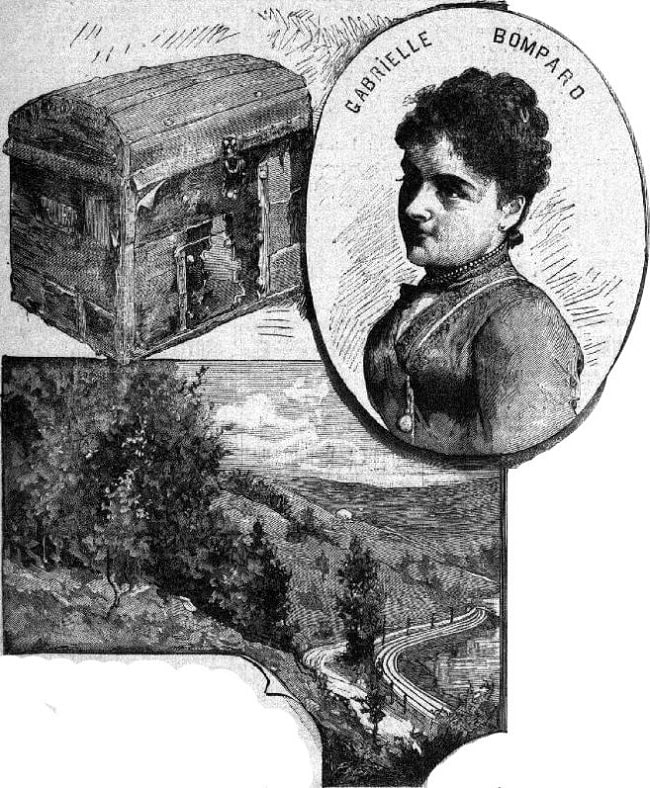
Engraving by Ernest Clair-Guyot. Illustration in Illustrated literary supplement, Le Petit Parisien, 15 December 1889. Image credit: Wikipedia (public domain)
Bompard had no problem in enticing Gouffé, who was already attracted to her, to the promise of a candle lit dinner and the all the rest undoubtedly on offer in their apartment. A chaise longue had been placed in front of the curtain where Gouffé was to lounge and Bompard, clad only in a silk dressing gown, was to flirtatiously place the cord around his neck. Bompard later claimed that she had frozen at that point and Eyraud, behind the curtain, had taken over. (Later in court, Eyraud insisted that Bompard had committed the crime alone.) Then like a bad slapstick, the pulley gave way, crashing Gouffé to the floor, whereby Eyraud had strangled the poor unfortunate with his bare hands before pushing him into the waiting trunk.
Eyraud, ever the gentleman, went back to the apartment he shared with his wife and left Bompard alone all night with Gouffé’s body in the trunk beside her.
The next morning the couple hired a cab and took the trunk to the station and onto a train destined for Lyon. Bompard and Eyraud followed on and reclaimed the trunk which was then transported to a remote place and the body pushed down an embankment. The trunk, which was later to provide conclusive clues, was dumped separately near Saint-Genis-Laval.
Eyraud and Bompard then left France and landed in Dover, now as a Monsieur Labordère and his son. Bompard, apparently with her long hair shorn, made a convincing teenage boy.
From Dover they boarded a transatlantic steamer to Canada under new names-Monsieur E.B. Vanaerd and his daughter Berthe. From Vancouver the couple went to San Francisco, where Eyraud kept his nose clean; they may never have been discovered and Gouffé’s murder gone unpunished. However, old dogs and new tricks etc would be Eyraud’s final downfall, taking Bompart with him.
Meanwhile back in France, Denis Coffy, a roadworker in Vernaison, had received a complaint about a bad smell…
A large oil skin bag was soon discovered under a bush. A preliminary autopsy was carried out on August 14th and the date of strangulation was estimated to be between three and five weeks previously. Three months later, a more detailed autopsy was performed by Doctor Alexandre Lacassagne and with a forensic precision not usual at that time, a hair taken from Gouffé’s comb and the description of an old back injury, led to the identity of the body.
When two days after the discovery of the body, the abandoned trunk was found, its stench unmistakeable, and its stickers indicating its journey from Paris to Lyon, the clues were mounting up and the prosecutor in Lyon transferred the enquiry to the commissioner Marie-François Goron, leader of the Paris Sûreté.
Marie-François Goron was acknowledged as a brilliant head of the Paris Sûreté, an investigator who thought outside of the box, and he was determined to solve this crime. The press were informed and members of the public who knew the victim and his movements or his acquaintances were urged to come forward and help the police. Knowing the public’s appetite for murder in all its hideous forms, Goron had the reconstructed, bloody trunk placed in the Paris Morgue for a week and invited the public to view. Thousands queued for a week. The same two names came up again and again, those of Michel Eyraud and Gabrielle Bompart, neither who had been seen since Gouffé’s disappearance in July.
Despite changing their names and Bompard’s disguise as a boy, the police, using one of the first Interpol notices, broadcast details of the couple abroad and a carpenter in London identified the trunk he had sold to Eyraud and Bompard. Their trail through Canada and the U.S. was soon known and they became two of the most wanted criminals of the era.
Eyraud, in New York, like the proverbial leopard unable to change his spots, had set up another admirer of Gabrielle’s, a very wealthy Frenchman, Georges Garanger, to meet the same fate as Gouffé. And here the plan unravelled spectacularly. Gabrielle had fallen in love with Garanger and warned him of Eyraud’s intentions. The couple quickly left for France with Eyraud still waiting in New York for Gabrielle to return with Garanger.
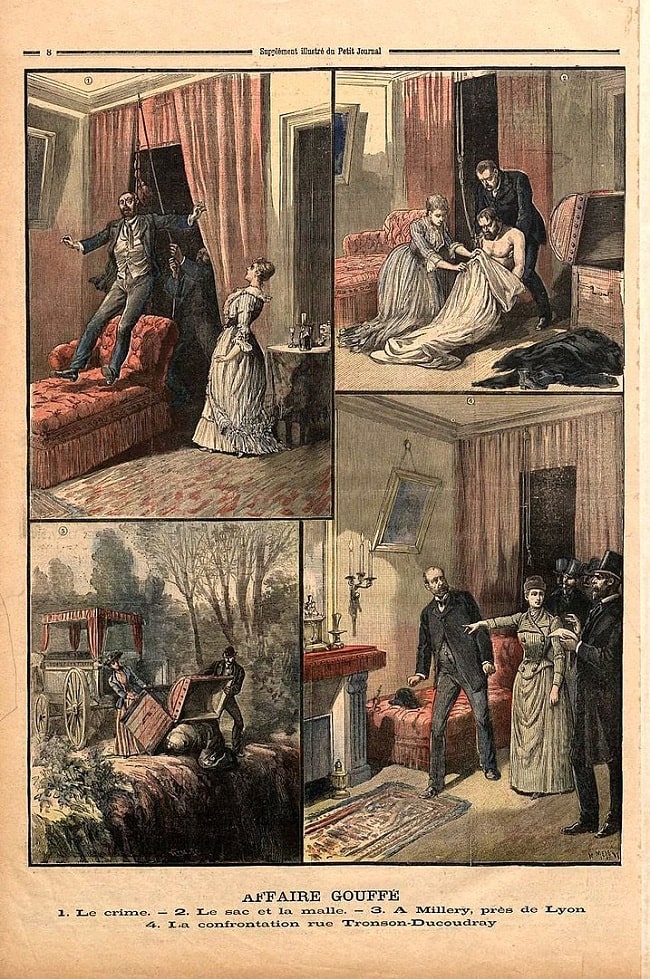
«The Gouffé Affaire». Picture by Henri Meyer. Illustrated literary supplement, Le Petit Parisien, 20 December 1890. Image credit: Wikipedia (public domain)
Bompard was immediately arrested and imprisoned in January 1890. She blamed the murder entirely on Eyraud, then under interrogation, claimed that Eyraud had hypnotized her. (Hypnosis was a hugely relevant subject in 19th century France with polarizing opinions held both by the public and respected scientists of the day. As such, it was a valid, if controversial, attempt at a defense strategy.)
Eyraud had, by then, fled to Cuba, aware of Bompard’s betrayal and that the police were now hot on his trail.
But Eyraud’s luck had finally ran out and he was arrested in Cuba and returned to France in a cage.
The trial was a sensation. Bompard, dressed to the nines for every court appearance, appeared to love the attention and charmed the crowds who followed her every move. In comparison to Eyraud, it was easy to believe that she had been lead astray, and was therefore less guilty than him, easier to believe in the power of hypnosis, easier to disbelieve Eyraud’s assertions that he was in fact her lap dog simply carrying out her orders. Eyraud knew that he was facing the death sentence and was determined to take his betrayer with him.
In the end, Eyraud, as he’d known, was publicly guillotined not long after the trial. Bompard, young and pretty, was allowed extenuating circumstances and was sentenced to 20 years hard labor, first in the female prison of Nanterre and then in a Clermont dungeon. The possibility that hypnosis played a part in Gabrielle’s actions had doubtless influenced the jury against the ultimate sentence of the guillotine.
Bompard was released from jail in 1905, with years reducted from her sentence for good behavior. She died in obscurity in the early 1920s.
However, ‘Milleray’s bloody trunk’, the ‘Gouffé Case’ or the ‘Eyraud-Bompard affair’ was to remain forever in the annals of French crime history and ‘The Bloody Trunk Case’ was never to be forgotten.
Lead photo credit : Gabrielle Bompard. Image credit: Wikipedia (public domain)
More in murder and mystery in Paris, true crime
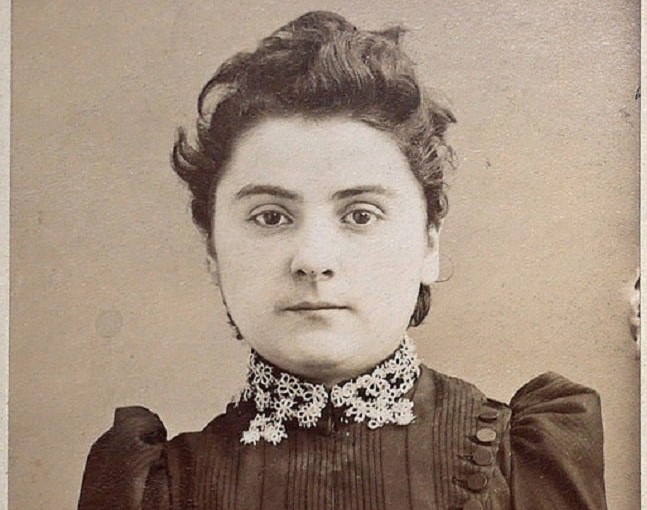

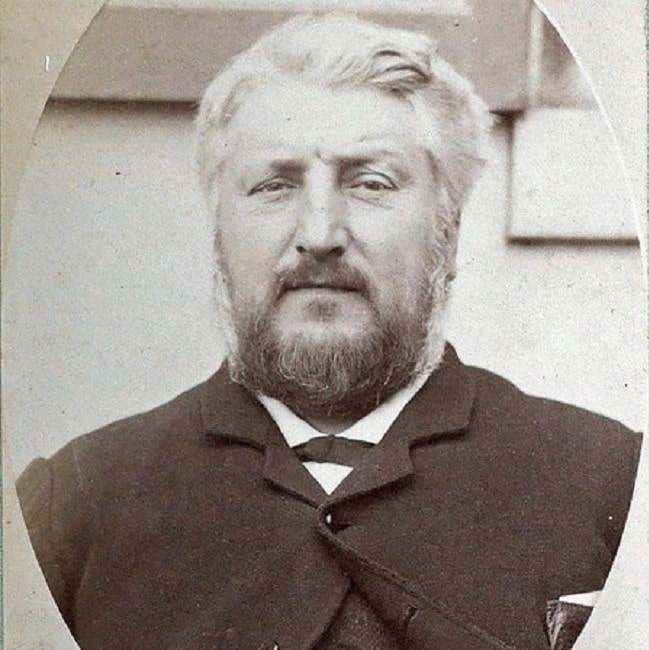
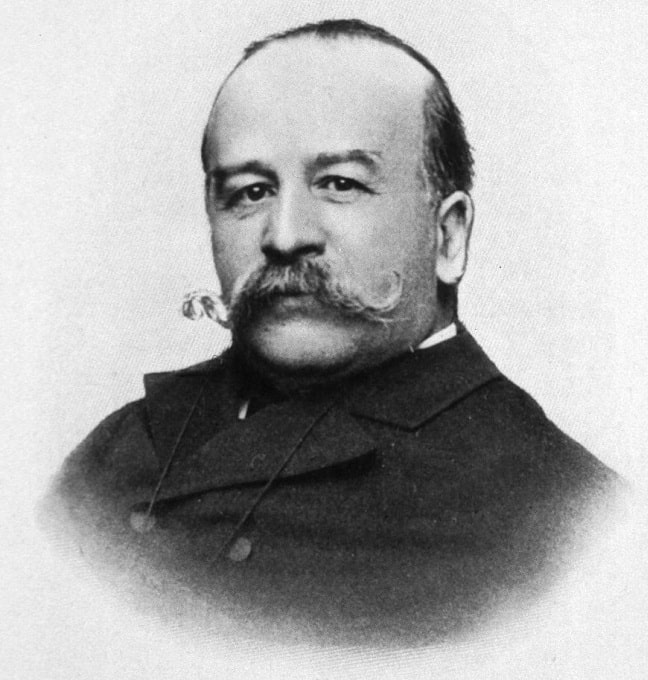
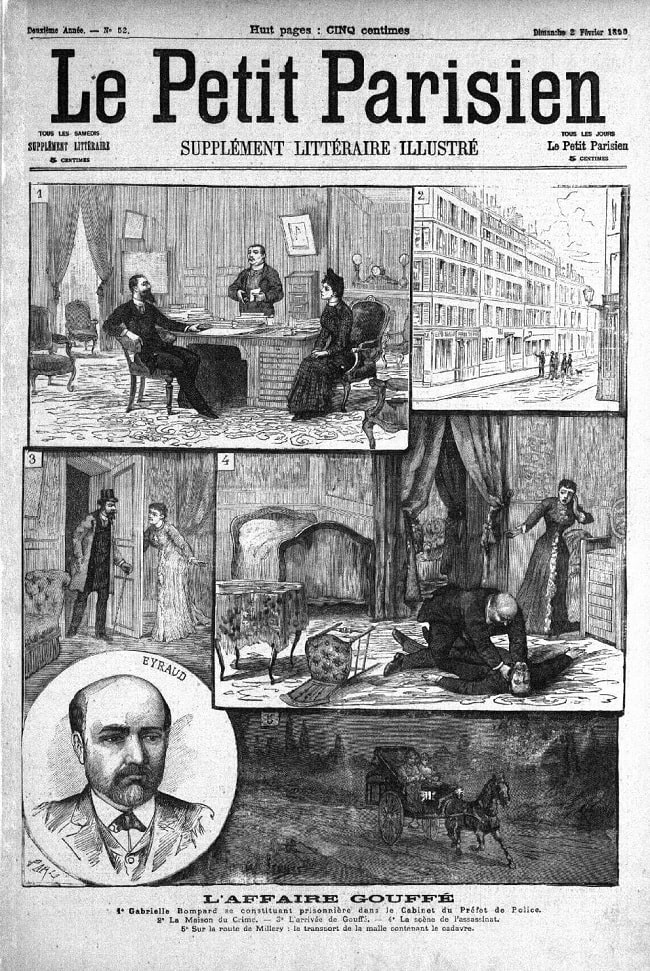

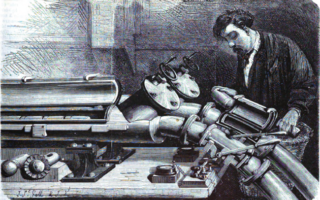

REPLY
REPLY
REPLY
REPLY